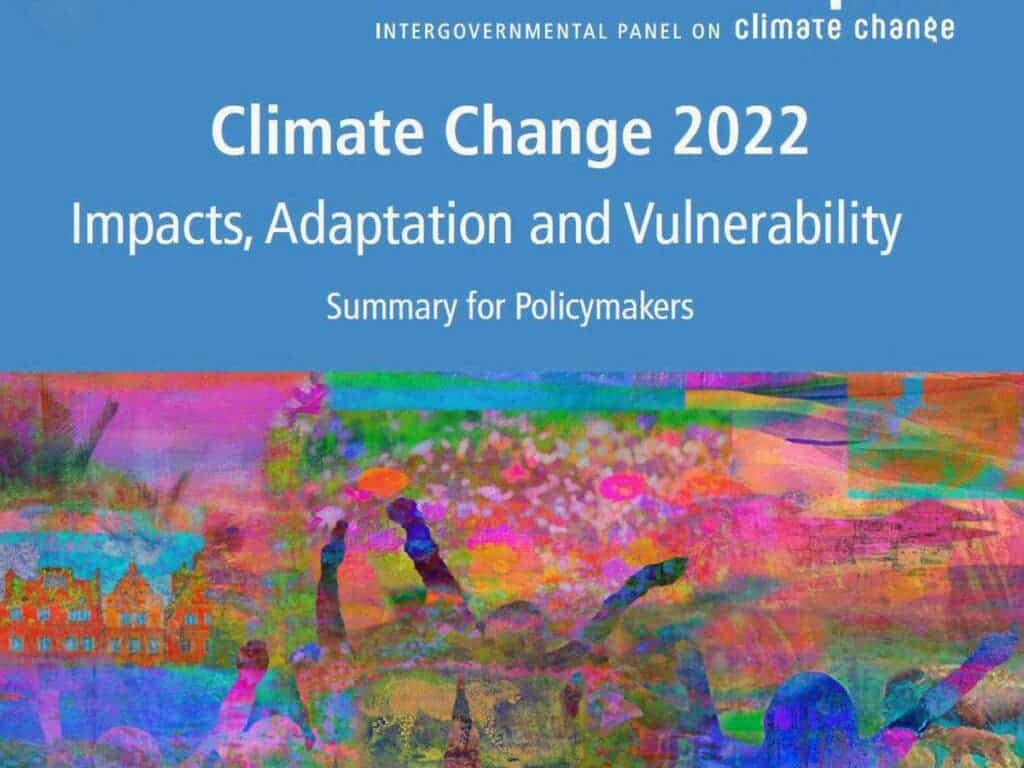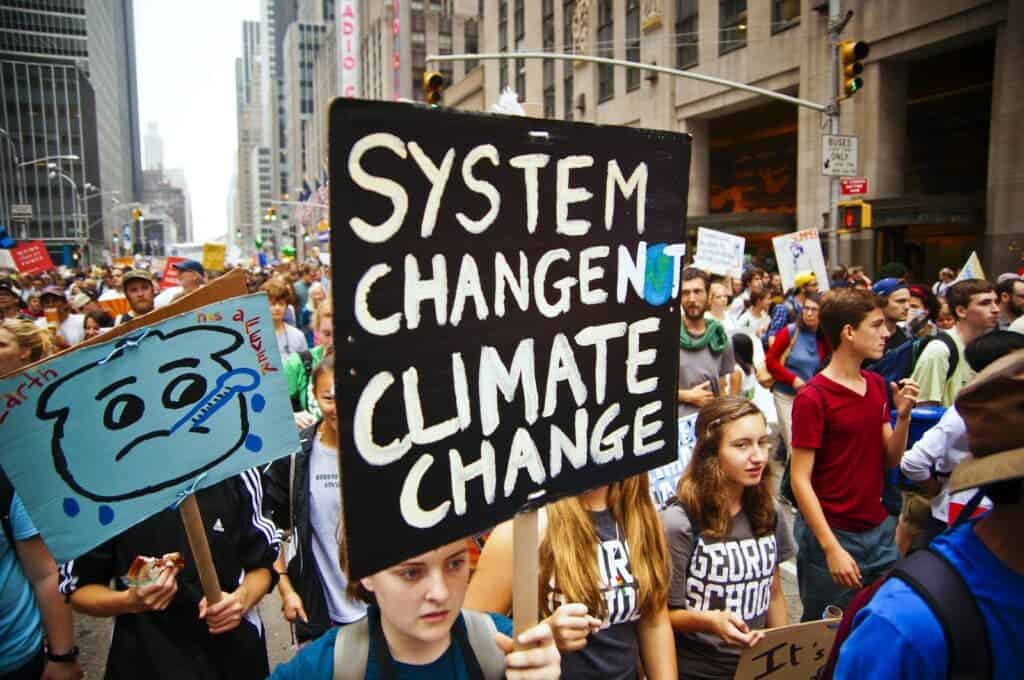Despite some efforts to reduce its risks, the climate crisis is already causing “dangerous and widespread” adverse impacts in nature and affecting the lives of billions of people, according to a new landmark report on the climate crisis.
The situation is much worse than predicted in previous reports and if we want to avoid catastrophic damage, we need much more convincing action.

The Intergovernmental Panel on Climate Change (IPCC), comprised of the world’s leading climate scientists, published a new report that updates the global knowledge of man-made global warming. Specifically, it goes deep into the growing impacts of the climate crisis and future risks if global emissions don’t drop further.
The report comes after an earlier publication by the IPCC last year when scientists concluded that major “unprecedented” changes were being seen – many of which were likely “irreversible.” Now, this second part focuses on how the changes to the climate are affecting people’s lives – including floods, heatwaves, and melting glaciers.
“This report is a dire warning about the consequences of inaction,” Hoesung Lee, Chair of the IPCC, said in a statement. “It shows that climate change is a grave and mounting threat to our wellbeing and a healthy planet. Our actions today will shape how people adapt and nature responds to increasing climate risks.”
All in all, the report reads like a gloomy prophecy.
We’re already in trouble
With just 1.1ºC of global warming that we’re seeing now, climate change is already causing widespread disruption in every region of the planet, the IPCC said. Extreme heat, record floods, and crushing droughts threaten food security and livelihoods for millions of people. Since 2008, over 20 million people were forced to leave their homes due to floods and storms.
Half of the global population currently faces water insecurity at least one month per year, a phenomenon driven by the climate crisis. Wildfires are affecting much larger areas than ever before in many parts of the world, while higher temperatures are enabling the spread of vector-borne diseases, such as malaria and Lyme disease.
“The science is now conclusive – and governments have endorsed this – we are in the era of unavoidable climate disasters causing loss and damage. Every fraction of a degree of warming will cause compounding and cascading climate impacts,” Harjeet Singh, Senior Adviser at Climate Action Network International, said in a statement.
People living in cities face higher risks of heat stress, lack of water, food shortages, and other impacts caused by climate change, according to the report. The fastest increase in vulnerability happened in informal settlements. This is especially problematic in sub-Saharan Africa, where about 60% of the urban population lives in these vulnerable areas.
Rural communities also face growing climate risks, especially indigenous people and those whose livelihoods depend on sectors exposed to the climate crisis. As climate change impacts worsen, many won’t have much choice but to move to urban centers. The IPCC projects that droughts across the Amazon basin will lead to rural migrations to cities.
Even if greenhouse gas emissions are drastically reduced today, greenhouse gases already in the atmosphere and current emission trends will have many big impacts unavoidable through 2040. In the next decade alone, climate change will drive between 32 million and 132 million more people into extreme poverty, according to the report.
“These reports are important as they can drive public policies of countries. But science is not being heard or respected. Governments only care about whether they are gaining power or money,” Gregorio Mirabal, head of COICA, an indigenous community umbrella organization, told ZME Science. “We are seeing the impacts of the climate crisis every day.”
Challenges on nature
The extent and magnitude of climate change impacts on nature are larger than previously expected, the IPCC said. Changes are happening faster and are more disruptive and widespread than what scientists expected. This adds to the other stressors faced by ecosystems, such as deforestation, pollution, and overfishing.
Climate change is currently destroying species and entire ecosystems. Animals such as the golden toad (Incilius periglenes) are going extinct due to the warming world, while others such as corals and seabirds are experiencing mass die-offs. Many species are also moving to higher latitudes and elevations to adapt to the higher temperatures.
Global warming of 2ºC by 2100 would mean an extinction risk for up to 18% of all species on land. If the world warms up to 4ºC, every second plant or animal species will be threatened. This is especially concerning for species living in high mountains or in polar regions, where the impacts of the climate crisis are unfolding much faster. But make no mistake: no place on Earth is spared.
Farmers, fishers, and other people who directly rely on nature’s services are experiencing severe effects. Even in a world with low greenhouse gas emissions (where global warming would reach 1.6ºC), 8% of today’s farmland will be climatically unsuitable by 2100. Under these conditions, fishermen in Africa could lose up to 41% of their yield.
“Drought and searing heat, ecosystem destruction, stronger storms and massive floods, species extinction – this is not a list of scenes in an apocalyptic film. Instead, it is the content of an authoritative scientific report detailing the climate impacts that are already wreaking havoc on our planet and its people,” Stephen Cornelius, WWF Global Lead for IPCC, said in a statement.
Future generations

Today’s young people and future generations will witness stronger negative effects of climate change, the report goes on. Children aged ten or younger in 2020 will experience a nearly four-fold increase in extreme events under 1.5°C of global warming by 2100 and a five-fold increase under 3°C warming.
The percentage of the population exposed to deadly heat stress is projected to increase from today’s 30% to 48-76% by the end of the century, depending on future warming levels and location. Outdoor workers in some parts of Africa, South America, and sub-Saharan Africa will be subject to a growing number of workdays with climatically stressful conditions.
Climate change will also further impact water quality and availability for hygiene, food production, and ecosystems due to floods and droughts. The IPCC estimates that between 800 million to three billion people will experience chronic water scarcity due to droughts at 2°C warming – which would grow to four billion over a 4ºC global warming.
Children growing up in South America will face an increasing number of days with water scarcity and restricted water access, especially those living in cities and in rural areas depending on water from glaciers. As the Andean glaciers and snowcaps continue to melt, the amount of available water decreases as the glaciers shrink or disappear entirely.
The warmer it gets, the more difficult it will become to grow or produce, transport, distribute, buy, and store food – a trend that is projected to hit poor populations the hardest. Depending on future policies and climate and adaptation actions taken, the number of people suffering from hunger in 2050 will range from 8 million to up to 80 million people.
Multiple climate hazards will occur simultaneously more often in the future. They may reinforce each other and result in increased impacts and risks to nature and people that are more difficult to manage. For example, reductions in crop yields due to heat and drought, made worse by reduced productivity because of heat stress, will increase food prices and reduce incomes.
“This report presents a harrowing catalog of the immense suffering that climate change means for billions of people, now and for the decades to come. It’s the most hard-hitting compilation of climate science the world has ever seen. You can’t read it without feeling sick to your stomach,” Teresa Anderson, Climate Justice Lead at ActionAid International, said in a statement.
The importance of adaptation
National and local governments, as well as corporations and civil society, acknowledge the growing need for adaptation, the IPPC said, with already 170 countries and cities that have included adaptation as part of their policies and planning. Nevertheless, efforts are still largely incremental, reactive, and small scale, with most focusing on current impacts or near-term risks
There’s a big gap between the necessary adaptation levels and what’s actually being done. The IPCC estimates that $127 billion and $295 billion will be needed per year by developing countries by 2030 and by 2050 respectively. At the moment, adaptation accounts for just 4% to 8% of climate finance, which means there’s still a long way to go to improve.
The good news is that existing adaptation policies can reduce climate risks – if funded properly and implemented faster. The report analyzes several the feasibility, effectiveness, and potential of several adaptation measures. These include social programs that improve equity, ecosystem-based adaptation, and new technologies and infrastructure.
Climatic risks to people can also be lowered by strengthening nature, meaning that we invest in protecting nature and rebuilding ecosystems to benefit both people and biodiversity. Flood risk along rivers, for instance, can be reduced by restoring wetlands and other natural habitats in flood plains, by restoring natural courses of rivers, and by using trees to create shade.
“Different interests, values, and world views can be reconciled. By bringing together scientific and technological know-how as well as Indigenous and local knowledge, solutions will be more effective. Failure to achieve climate-resilient and sustainable development will result in a suboptimal future for people and nature, IPCC co-chair Debra Roberts said in a statement.
The bottom line
The next few years will be crucial in terms of reaching a sustainable future for all. Changing course will need an immediate, ambitious, and organized response to cut emissions, build resilience, and conserve ecosystems. Governments, civil society, and the private sector have to step up. As the IPCC report makes clear, we have a window of opportunity, but that window is quickly closing down.


